New Fueling Innovations Drive Efficiency and Emissions Gains for More Fleet Operators
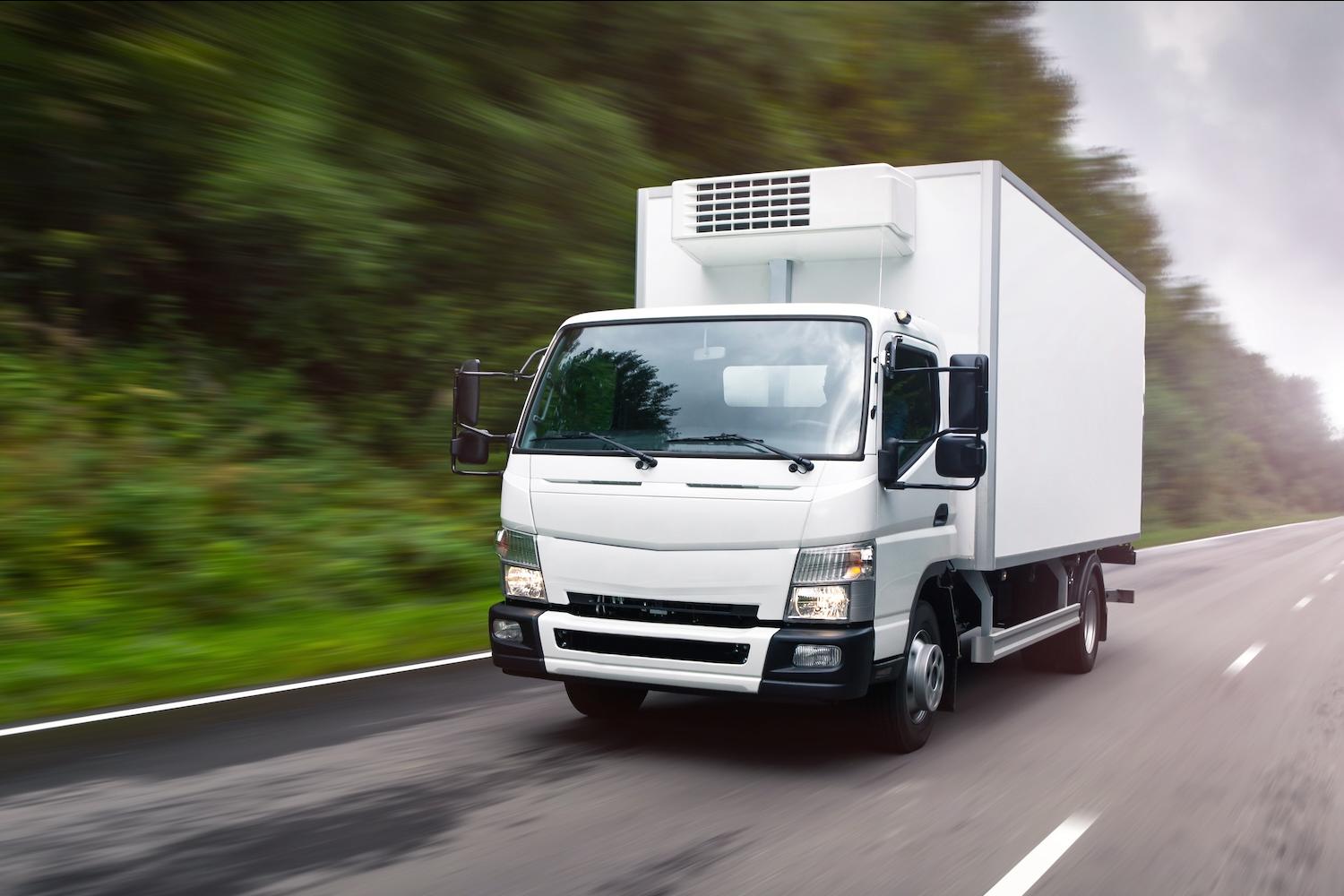

(Image: Level/Adobe Stock)
Fueling corporate vehicle fleets is complex, and getting it wrong can cost millions in excess labor and energy costs for fleet operators. This challenge is only growing as operators balance multiple fuel type needs and alternatives such as renewable fuels come to market. The energy delivery company Booster has developed a digital-first solution to handle this complexity. Operators who previously had no other option but the gas station can now start every shift ready to go, saving time and money while reducing fossil fuel needs.
Booster serves everyone from small service businesses like local landscapers up to the largest fleet operators in the world, such as Amazon, to power transportation more sustainably. However the company got its roots back in 2015 serving consumers at large office parks. "Before I founded Booster, my family had designated me as the ‘chief fueling officer’ because no one wanted to go to the gas station,” recounted CEO Frank Mycroft. “That’s when I realized the need for a better solution. We launched service at top-tier corporate campuses like Facebook, Paypal, Cisco and Genentech, which required us to build the highest bar of quality, trust, digital-power transparency and service. We call this the purple promise, and it anchors our game-changing fleet service today.”
The pandemic steered Booster to focus on its business fleet clients, but to do so in a digital-first, self-service model that had never existed before in the industry, and enabled more complex last-mile fleets to adopt mobile energy delivery.
Because Booster was the first company in the United States to offer mobile gasoline refueling services to last-mile fleets, this creation of a new industry sector came with its own set of challenges. “Booster had to work closely with regulators to build this industry,” said Puneet Bawa, the company’s general manager for Southern California. "Every element of our systems, from the digital services to the hardware, is engineered with technology to meet the strictest regulatory standards to deliver renewables and gasoline with the lowest emissions.”
Mobile gasoline refueling services were not permitted in most regulatory codes when Booster was founded. So, the company had to collaborate with government agencies in states like California, Texas and Washington, presenting the company’s training, technology, and business model plans that worked to eliminate emissions and hazards. “We co-authored multiple new laws and regulations,” highlighted Shenna Bradshaw, the company’s head of policy. “Booster was the first in this game.”
Booster creates a more sustainable way of fueling fleets
Booster delivers conventional and renewable fuels, as well as hydrogen and electric vehicle services in select markets. The company’s dual-product delivery assets serve complex, multi-product client needs efficiently. Booster also works with partners to offer EV charging for fleet EVs and leverages its team of talented commercial drivers to deliver hydrogen within the company’s partner network.
“We are focused on eliminating the number of miles driven to gas stations and living up to our credo of increasing sustainability and reducing our customer's carbon footprint,” Bawa said.
Booster is also betting big on renewable diesel. “In 2024, California is going to mandate that all off-road vehicles and equipment must use dyed renewable diesel. The challenge here is access. Booster has partnered with some of the largest renewable suppliers on the West Coast,” Puneet shared. “We are in a strong position to lead the charge in renewables conversion, both on- and off-road. Our systems are nimble and flexible, coupled with tech to predict demand autonomously, making us the most versatile and viable solution.”
Moving toward more alternative energy solutions aligns with Booster’s sustainability goals, Bawa said. “In addition to renewable diesel and mobile electrification through a third-party partnership, we have supported mobile delivery of hydrogen around the Port of Los Angeles,” he explained. “And we are exploring avenues where Booster could partner with other companies to facilitate the delivery of alternative fuels.”
Booster saves companies time and money
In the San Diego area, 35 percent of Booster’s clientele are landscape companies. These companies generally send out crews of four to six workers in pickup trucks and trailers every day and often need refueling services before each new day can begin.
“We optimize cost efficiencies for companies by mitigating the need for four to six individuals to be present in the vehicle during fueling at a gas station, resulting in significant savings on labor expenses,” Bawa explained.
Even more critical than cost savings is employee safety. Bawa got an up-close view as to why in his prior role managing the insurance program for another company’s corporate fleet. “Two out of three preventable accidents our fleet had were from being backed into at a gas station,” he said. “Simply being parked at a gas station or fuel stop is one of the biggest causes of accidents. We provide our customers with peace of mind.”
Booster is also able to pass on savings in direct fuel costs. The branded gas found at most gas stations is generally more expensive than unbranded fuel, and Booster participates in many unbranded fuel contract deals that allow it to offer clients better prices. The company also spends little on advertising, which further drives down pump cost for customers. “Our biggest competitive advantage is word of mouth,” Bawa said.
Booster is leading the industry in new directions
The logistics industry has dealt with tremendous volatility since 2020, Bawa shared. Booster’s procurement methods and internal efficiencies allow the company to provide stable and competitive solutions that help customers manage and reduce the impact of the macro-environment on profitability, he said. “We closely monitor the markets,” Bawa told us. “Every penny holds significance both for us and our customers. We have effectively taken these elements and turned them into a competitive advantage, allowing us to outperform our peers in the industry.”
Booster says it’s laser-focused on creating a more sustainable and economical fueling sector. By creating partnerships with third-party providers, the company helps to ensure that renewable fuels, hydrogen and electricity are all available in the fleet fueling marketplace.
“When I first started here, I was skeptical about sustainability, but now I have seen firsthand how this process works, and I see our work as something that is changing the landscape of this industry for the better,” Bawa said. “We are cutting out the middleman, cutting carbon emissions, and accelerating the adoption of renewable alternatives. It’s a one-two approach: wean customers off the gas station, then off of fossil fuels entirely. It is inspiring to me, and I hope it inspires others to do their part for a better future.”
This article series is sponsored by Booster and produced by the TriplePundit editorial team.
This Company Wants People Around the World to Chase Their Dreams


Did you know that every handful of M&M’s or package of Ben’s Original you eat not only tastes good, but does good too? Social responsibility is not only good for business, but it’s increasingly expected by the American public. More than half (55 percent) of U.S. consumers say companies should be involved with social, environmental and political issues, according to a recent study from Harvard Business School. Additionally, 75 percent of respondents consider it somewhat or very important for companies to improve the world. When it comes to bottom lines, reputation with external and community stakeholders has a significant influence on corporate earnings.
With this commitment in mind, leadership across Mars and its family of brands are working to identify opportunities to leverage their influence in support of underserved communities. Through several initiatives across its portfolio, Mars is focusing its resources to bolster diversity, equity and inclusion for both employees and consumers.
In doing so, the company launched programming to support women entrepreneurs, artists, and Black college students among others, to help lift them toward their goals.
“This is all happening across Mars, driving a societal positive impact,” said Marissa Viola, senior director of brand and content at Mars Wrigley.
For example, the iconic Mars brand M&M'S launched the M&M’S FUNDd last year in an effort to help increase the sense of belonging for 10 million people internationally by 2025. “We’re showing up to support fans across the world,” Viola said. That support includes resources, mentorship, opportunities and financial support in the arts and entertainment spaceBut that’s not all.
To celebrate and uplift women globally, this year M&M’S launched Flipping the Status Quo, honoring women who are positively impacting their communities. In March, 20 women were selected, and each was awarded $10,000 to support their work. Mars and M&M’S later offered a similar program to its vast network of more than 140,000 associates from around the world, and invited them to nominate co-workers who are flipping the status quo by building a more inclusive world and helping women reach their full potential.
“We’re looking for women who are doing something new in their industries — whether it’s STEM or fashion,” the company wrote in its call for external applicants. “We want to help them further uplift their missions to help everyone feel like they belong.”
The Dove brand also celebrates women entrepreneurs with the two-year-old Dove InstaGrants program, awarding three female entrepreneurs each year with a $10,000 grant to help support their business ventures.
“Ultimately, we feel that fostering an inclusive brand can help shine a light on women and the issues they stand for,” Viola said. “We’re not just using ads, but actually acting to lift women to the next level.”
Mars is also working to create opportunities for underserved groups across its portfolio — from snacks and food, to pet nutrition and veterinary health.
The Ben’s Original brand, for example, runs its Seat at the Table Fund, a $2 million scholarship program to help African American college students eager to work in the food industry. Co-sponsored by UNCF (the United Negro College Fund) and National Urban League, successful candidates receive funding for educational expenses for associate, bachelor’s or certificate programs in culinary arts or food science.
“African American students often face more financial obstacles and lack access to networking opportunities and mentorships that are critical to career success,” said Kristen Campos, vice president of corporate affairs for Mars Food and Nutrition in North America. “It’s inspiring that Mars recognizes the need for change and is taking action toward it.”

Investing in young people with aspirations in the food space also helps to bolster the future of businesses like Mars. “Supporting and empowering young professionals from a diverse range of disciplines and backgrounds will help bring the brightest minds to our business and set us up for continued growth and future success,” Campos said. “The Seat at the Table Scholarship Fund will have a lasting impact on scholarship recipients by helping to provide them with support for higher education and opportunities they deserve.”
In March 2021, eight U.S. students were each awarded the first $25,000 annual grants. Since then, the program has been expanded to include students in the United Kingdom and Canada. The grants can be renewed each year.
“Mars and Ben’s Original Seat at the Table Scholarship provided me with the financial support and community I need to fully engage in my academics and push myself further in my studies,” said Chai Comrie, a student in Florida A&M University’s College of Agriculture and Food Sciences and a Seat at the Table scholarship recipient. “I am grateful to be able to solely focus on my education as a result of this scholarship.”
Every year, Mars strives to introduce resources to consumers and employees that help them achieve their personal ambitions and make their mark on greater society, Campos said. “I’m proud to work for a company like Mars that invests in underrepresented individuals and communities by providing access to — and creating opportunities for —new and diverse talent and empowering them to pursue their dreams.”
This article series is sponsored by Mars and produced by the TriplePundit editorial team.
(Image credit: New Africa/Adobe Stock and Mars)
Will Sustainable Aviation Fuel Help the Industry Reach its Net-Zero Goals?


(Image: Marina Hinic/Pexels)
Contrary to expectation, the aviation industry accounts for a relatively small share of global carbon emissions. It was responsible for 2 percent of global emissions in 2022. However, the industry is growing exponentially, faster than road, rail or shipping. And flying forms the largest chunk of an individual’s carbon footprint.
The biggest challenge of the aviation industry is that it is the hardest to decarbonize. “Air transport has always been referred to as a ‘hard-to-abate’ sector due to the fact that we don’t have off-the-shelf solutions for decarbonization,” Haldane Dodd, executive director of Air Transport Action Group, said at the Global Sustainable Aviation Forum during COP28 in Dubai.
Though it comes with challenges, the aviation industry has established that the use of sustainable aviation fuel (SAF) is a viable solution and perhaps the only way to decarbonize the sector without relying on carbon offsets. It is estimated that SAF could cover around 65 percent of the total reduction in emissions needed by the industry to reach net zero in 2050, as called for in the 2015 Paris Agreement.
What exactly is sustainable aviation fuel?
Sustainable aviation fuel is a liquid fuel used in commercial aviation that reduces carbon dioxide emissions by up to 80 percent. It is produced from a number of sources — referred to as feedstock — that include waste oil and fats, green and municipal waste, and non-food crops.
The first test flight with biojet fuel, which is extracted from plant or animal sources, was performed by Virgin Atlantic in 2008. More recently, Virgin Atlantic celebrated its first 100 percent SAF flight from London to New York City. Named Flight100, it marked the world’s first 100 percent SAF flight by a commercial airline across the Atlantic. The sustainable aviation fuel used for the flight was made from a blend of waste fats and plant sugars.
The industry is ready to use sustainable aviation fuel, but there is not enough of it
Although many airlines are ready to use sustainable aviation fuel to fulfill their net-zero goals, the supply is limited.
“There was at least triple the amount of SAF in the market in 2022 than in 2021. And airlines used every drop, even at very high prices!” Willie Walsh, the International Air Transport Association’s director general, told India-based aviation magazine SP’s Airbuz. "If more was available, it would have been purchased." In 2023, the amount of SAF available met just 0.20 percent of the industry’s fuel needs. That amount cost around $1 billion.
During the International Civil Aviation Organization Conference on Aviation and Alternative Fuels, held in Dubai before COP28, 50 airlines representing over 40 percent of global air traffic committed to using SAF for more than 5 percent of their total fuel use by 2030. Many set a goal of 10 percent and some up to 30 percent by 2030.
Boeing is mobilizing its supply chain to complete the testing necessary to ensure its commercial airplanes are 100 percent SAF-compatible by 2030. Since 2022, the company has agreed to purchase 7.6 million gallons of sustainable aviation fuel for its U.S. commercial airplane operations.
Rolls-Royce recently announced that it successfully completed compatibility testing of 100 percent SAF on all of its in-production civil aircraft engine types. This fulfills its 2021 commitment to demonstrate that there are no engine technology barriers to using 100 percent SAF.
How much sustainable aviation fuel is needed, and how much will it cost?
Meeting the 2050 net-zero goals will require an annual production capacity of 118.6 billion gallons of SAF. Investments are in place to expand the annual production from the current 33 million gallons to 1.3 billion by 2025.
To match the amount of jet fuel the U.S. used in 2019, for example, the country would need to invest $400 billion to deploy 250 sustainable aviation fuel refineries by 2050.
The current amount of SAF available on the global market is extremely low. And right now, SAF is three to five times more expensive than fossil fuels. Widespread use of the fuel will only be possible if its supply volumes and availability increase significantly as quickly as possible and SAF prices fall.
Scaling up production is a challenge
The only way SAF is currently produced at scale is with feedstock, but the available supply of feedstock materials is expected to limit increased production, said Agnes Thornton, director and co-founder of Sustainable Flight Solutions Ireland, an independent organization bringing together the aviation industry, supply chain stakeholders, and academia to drive the production and implementation of SAF.
“The development and acceleration of synthetic fuel production, as well as novel feedstock opportunities in the biomass sector, are essential to meet mandated demand from airlines, as well as voluntary demand from other industries,” Thornton said.
SAF can be produced synthetically via a process that captures carbon directly from the air. It is considered sustainable because the raw feedstock does not compete with food crops or water supplies, and it is not responsible for forest degradation.
Power-to-X technology is another way to scale sustainable aviation fuel production, Thornton said. Power-to-X is a collective term for technologies that turn electricity into carbon-neutral synthetic fuels, such as hydrogen, synthetic natural gas, liquid fuels or chemicals.
The Lufthansa Group, one of the five largest SAF customers worldwide, is investing up to $250 million in procuring next-generation SAF technologies for the coming years. Their focus is on Power-to-Liquid and Sun-to-Liquid technologies. For example, Lufthansa Airlines, the German Aerospace Center, Airbus, MTU Aero Engines and Munich Airport recently signed a letter stating their intent to research Power-to-Liquid aviation fuels. Furthermore, the Lufthansa Group’s Swiss International Air Lines invested in the solar power manufacturer Synhelion at the end of 2022. The airline aims to fly with the first quantities of solar fuel.
“New technologies are being developed at a fast rate,” Thornton said. “Feasibility is one thing, however more important is sustainability. Several certification bodies, such as the [International Sustainability and Carbon Certification] and RSB, ensure entire supply chain certification and sustainability of the end product. The testing for feasibility and commercialization is yet to come for several of these technologies.”
To achieve net zero by 2050, increased funding for early-stage research and development, as well as policy development to aid SAF deployment processes, will be the determining factor in how fast the industry will move.
2024 Sustainable Living Challenge: Join Us in Making a Difference This Year
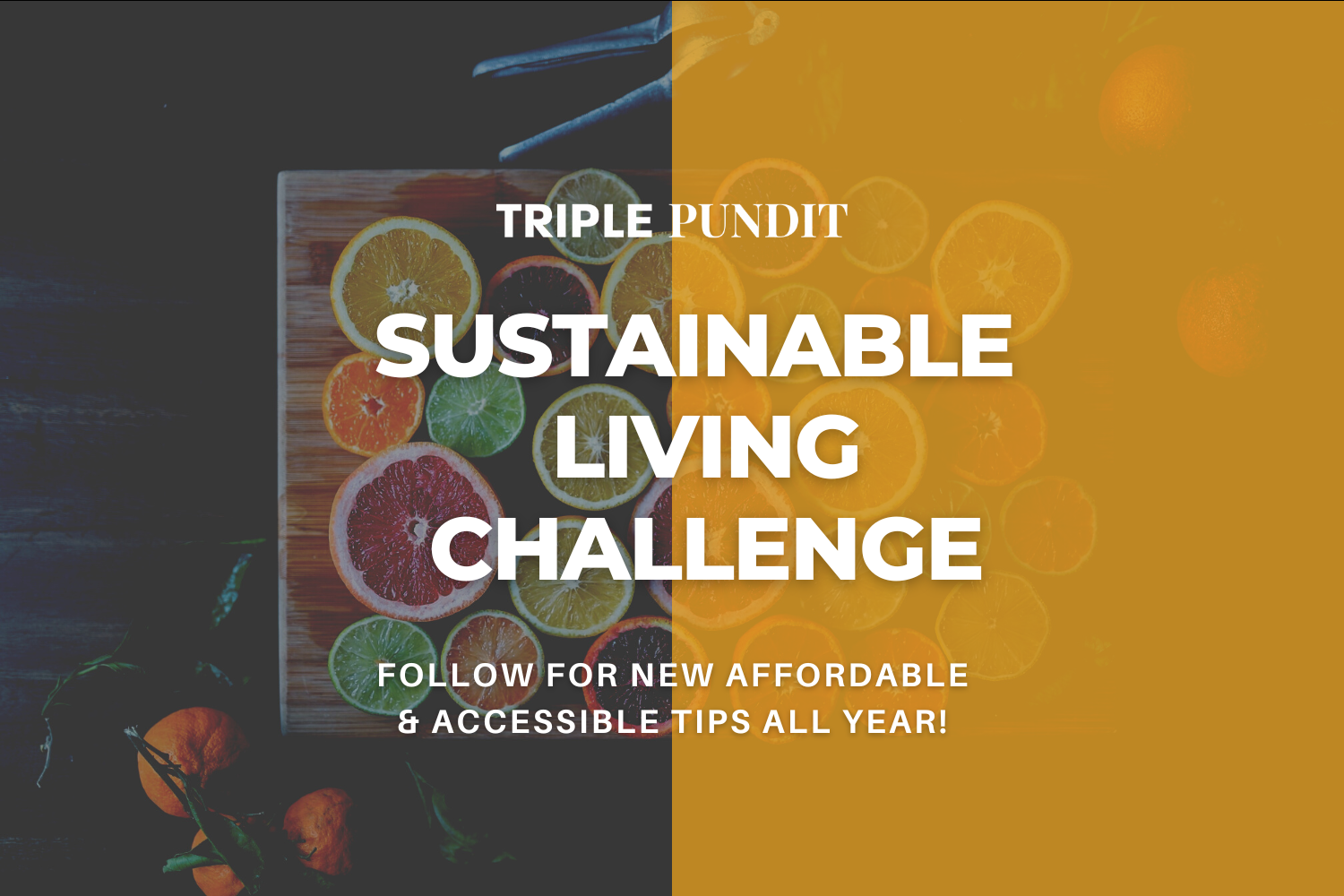

Naysayers might argue sustainable living could never move the needle on monumental challenges like climate change and environmental pollution, but the data shows individual actions add up to massive impact.
If everyone around the world cut the food they waste in half, that alone would get us 15 percent of the way toward capping global temperature rise at 1.5 degrees Celsius and avoiding the worst impacts of climate change. If every American drove just 10 percent less, we'd avoid carbon emissions equivalent to shutting down 28 coal-fired power plants. And if just half of us chose to eat less meat — not zero meat, less meat — that's another 15 percent closer to the climate finish line, to name just a few examples of lifestyle shifts proven to make a big collective difference.
People say they're ready for this kind of change. But many aren't sure where to start, what shifts are actually helpful, and how to fit those shifts into their increasingly busy lives. Images of aesthetic zero-waste homes and pricey sustainable "swaps" floating around social media can easily leave us feeling like what we do will never be good enough, so there isn't much point in trying.
The good news is: That's completely bogus. Moving toward sustainable living doesn't have to be more expensive, or even more time-consuming, than what you're doing now. And if that new year's diet taught us anything, it's that all-or-nothing mindsets only set us up for failure and hold us back from what we can really do.
After rounding up a list of sustainable habits to try in 2024, and seeing the response from our community of readers, we found ourselves inspired to prove sustainable living can be easy, budget-friendly and fun (yes, fun!).
Join us all year for the Sustainable Living Challenge!
For the rest of the year, our staff of contributors will be trying out new-to-us sustainable living habits and sharing what we learn along the way. Finding easy ways to minimize food waste, trying out new modes of transportation like microtransit, and unlocking the impact potential of our 401(k) plans are just some of the sustainable shifts we're giving a go this year.
We invite our community of readers to take the Sustainable Living Challenge and join us as we adopt simple, accessible habits that reduce our personal footprints!
Every month will focus on a key theme — covering simple changes you can make at home, with your money, when you’re traveling, with your entertainment and when you’re shopping — and will feature tips, tricks, and personal experiences from our readers and writers.
We'll invite our community to follow along by choosing one or two things each month that feel realistic and attainable, no matter how big or small. And we'll follow up throughout the year, with the aim of incremental improvement and increasing ambition as we can.
It's all part of our new focus on solutions journalism and our aim to empower our community to be the solution in their own right. We'll kick off next week with Home Month, including budget-friendly ways to reduce energy, water and waste at home. Some things our team is committed to this month include:
- Saving our vegetable scraps for homemade broth.
- Finding other low-lift ways to manage food waste, such as storing food optimally and even using tools like ChatGPT to keep our bins at bay.
- Sneaky and simple tactics to cut water and energy use, from getting smart about doing our laundry and dishes to finally clearing those old emails out of our archives.
- Auditing our trash! And cutting it down to size.
Ready to join us? Sign up for our daily newsletter to receive email updates, and follow us on LinkedIn and Instagram to see some of the ways our readers and writers are getting more sustainable this year. You can also get in touch with us here with tips or questions and join the conversation on social media with the hashtag #3pSustainableLivingChallenge.
The New Ocean Cleanup Crew: Seaweed-Sinking Robots


A prototype of Seaweed Generation's AlgaRay robot that collects and sinks excess Sargassum seaweed. Image courtesy of Seaweed Generation.
Last summer saw an invasion of epic proportions. A massive island of seaweed sprang up in the Atlantic Ocean and drifted ashore. While mats of brown algae have blanketed the tropical shores of the Caribbean before, 2023 was one of the biggest blooms yet — spanning over 5,000 miles.
In this case, the brown algae is Sargassum, which naturally clumps together to form free-floating mats. It's popped up in the central Atlantic and Caribbean in higher frequencies since 2011. Once confined to their namesake Sargasso Sea in the central Atlantic, the growing number of Sargassum mats now damage ecosystems and harm economies.
Yet enterprising companies are tackling the abundance of algae with gusto, transforming it into products like shoes, paper, animal feed, compost and charcoal. One business, Seaweed Generation, takes a different approach to the problem: robots. Its seafaring devices clean up the seas and sequester carbon at the same time.
Ecosystems smothered by seaweed
Small mats of Sargassum can be beneficial, providing food and protection for sea turtles, fish, crabs and birds. They’re also important nursery areas for commercially-fished species like mahi mahi, amberjacks and jacks, and they help control beach erosion when washed ashore.
The problem is when Sargassum grows out of control. Large blooms can block sunlight, killing valuable seagrasses below. When the algae die and decompose, they smother corals and deplete oxygen in the water, causing fish kills. They can also pose problems for sea turtles by deterring them from critical nesting habitats and hindering hatchlings from swimming offshore.
To make matters worse, the latest blooms contained large amounts of plastic debris covered in bacteria. These bacteria carried genes causing leaky gut syndrome, which sickens fish, crustaceans and seahorses.
Costs of Sargassum
These Sargassum blooms take a bite out of the economy, too. The piles of brown slime scare off tourists with the smell of rotten eggs that can cause respiratory problems. For instance, in areas affected by large Sargassum blooms in 2018, Barbadian hotels saw their occupancy drop, while those in areas unmarred by seaweed experienced increased occupancy. Tourism in Caribbean islands can generate over $60 billion, contributing up to half of many countries’ GDP. Similarly, tourism is one of the largest industries in Florida, regularly contributing $80 billion to $95 billion toward the state’s GDP and supporting millions of jobs.
To add insult to injury, the clean-up of Sargassum is expensive. In 2018, the Caribbean-wide clean-up cost over $120 million. And what to do with the copious amounts of seaweed is problematic. Since it contains arsenic and other heavy metals, it’s unsuitable for food or fertilizer. Yet leaving it alone can clog desalination and power plants and damage fishing boats, equipment and gear.
Seaweed solutions
Where others saw a floating mess, Seaweed Generation saw an opportunity. Instead of beach cleanup or product development, they focused their efforts at its source.
“If you want to deal with the Sargassum problem, you have to deal with it offshore,” said Mike Allen, co-founder and chief science officer of Seaweed Generation. “Once it hits that beach, it's too late. And the second major thing is as soon as it hits that beach, it's degrading.”
Inspired by manta rays, they created a seaweed-wrangling robot called the AlgaRay. Gliding slowly across the ocean’s surface, it collects noxious seaweed and dives 200 meters to release it. At that depth, the air sacs keeping the seaweed buoyant compress, and the Sargassum sinks to the ocean floor. It then repeats this sea-cleaning action four to six times per hour.
“What I like about it is its elegance from a carbon perspective, because these robots are solar-powered and the energy footprint is tiny,” Allen said. “All we're doing is literally moving seaweed biomass about 200 meters. That's all our energy costs.”
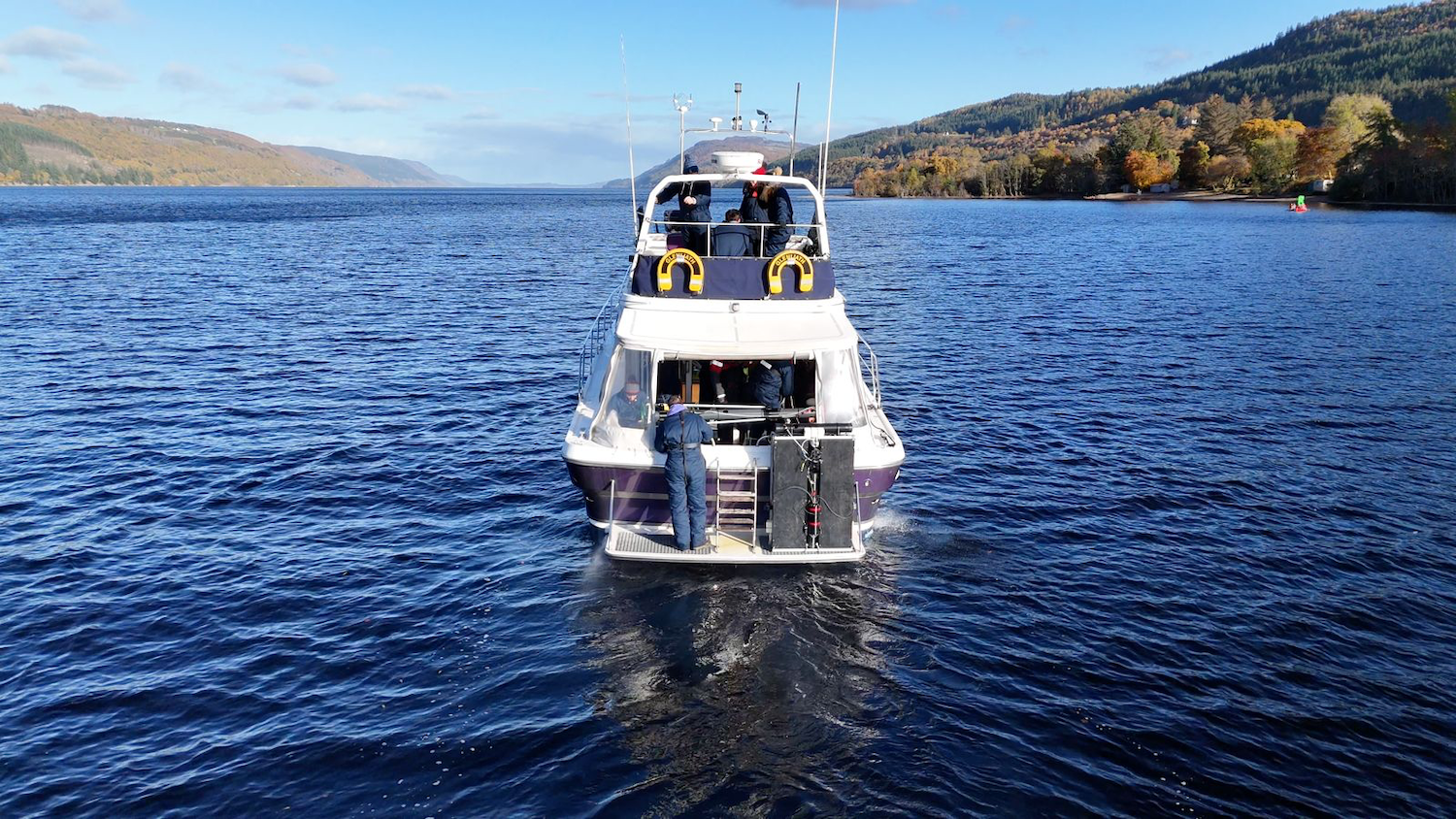
These robotic maneuvers have two main benefits: ridding the surface of algae and sequestering carbon. Sargassum uptakes carbon for photosynthesis from the ocean water surrounding it. And the ocean is a giant carbon sink, absorbing about 31 percent of carbon dioxide emissions from the atmosphere. While seaweed can sink naturally to the ocean floor, the AlgaRay aims to amplify this process.
At depths below 1,000 meters, the seaweed and the majority of its carbon should stay there for hundreds of years, according to Seaweed Generation’s estimates.
In fact, the deep sea is something of a black hole for carbon. The amount stored there is 17 times more than that found in the surface ocean, the land and the atmosphere combined, Allen said.
Just one of Seaweed Generation’s offshore models of the AlgaRay should be able to sink 80,000 tons of Sargassum per year, Allen said. That’s equivalent to removing over 8,000 tons of carbon dioxide, which is the same impact as growing over 132,000 tree seedlings for 10 years.
Challenges of seaweed sequestration
Seaweed Generation is off to a great start, but a few obstacles lie on the road ahead. While clearing away Sargassum removes the problem for us, the ocean floor is not devoid of life. However, the company intends to spread out the deposits of seaweed to mimic the natural process of Sargassum sinking, Allen said.
Further, the AlgaRay's activity is complemented by robots that monitor the ocean surface where Sargassum is removed and the ocean floor where it sinks — measuring the resilience of these deep-sea ecosystems. After preventing a mountain of Sargassum from washing ashore, the company intends to measure the recovery of sensitive coastal ecosystems like coral reefs and mangroves.
Another major challenge lies in reaching customers. “Our problem is the market,” Allen said. “We can scale very quickly, but ultimately we need customers and people who are going to buy carbon dioxide removal, and at the moment it's a voluntary market.”
Despite this, Seaweed Generation is moving ahead with its plans. “We have an agreement with the Antiguan government, which we’ll be signing soon,” Allen said. “That’s for a 49-year lease on 500 square kilometers in their exclusive economic zone, which is over 4,000 meters deep, so that's the perfect place to sink. And then we're getting lots of interest from hotel groups for much closer to shore. There, we would be intercepting Sargassum and then moving it either to a port where it can be offloaded safely, putting it somewhere else, or taking it out to sea and sinking it.”
Ocean conservation
At the end of the day, algal blooms are not an easy problem to solve. They’re linked to a web of widespread phenomena, including nutrient runoff.
“The reason why this Sargassum is growing is a combination of a lot of factors, but none of these factors are going away,” Allen said. “You've got deforestation leading to rapid runoff. You’ve got intensive fertilizer use and nutrients running out into the Mississippi Delta, the Amazon and the Congo, and then all coming out into the Atlantic. The oceans are absorbing more and more [carbon dioxide], so there's more [carbon dioxide] available. And you've got ocean warming … It just seems to be nature's response to all those environmental perturbations.”
Addressing the problem head-on, and cleaning up major rivers from the Mississippi to the Orinoco, would help mitigate the blooms. While this would require major efforts, it may be the most permanent solution. In the meantime, companies like Seaweed Generation are doing their best to find Sargassum’s silver lining.
3 Ways to Improve Disability-Inclusive Design in 2024


A child using Lego Braille Bricks which have raised studs corresponding with a letter or number in braille, a tactile language system designed to help visually impaired people. (Photo used with permission. ©2023 The LEGO Group.)
When I began writing about disability six years ago, it seemed the majority of disability-related media coverage and product design was centered around senior citizens. Representation has improved since then, but there is still a long way to go. The reality is that anyone can find themselves disabled at any time. People at all life stages require products and places to fit their needs. That’s the beauty of disability-inclusive design. It isn’t “just” for one group: Inclusive design can be used by and benefit all. And it can make sound business sense.
Here are three ways businesses can use disability-inclusive design to make meaningful changes in 2024 and beyond.
1. Increase accessibility-focused offerings within existing major retail sites
In 2023, several major retailers introduced dedicated categories on their websites to assist customers in finding disability-inclusive products in one place.
The Adaptive at Walmart marketplace features disability-inclusive housewares, mobility aids, medical supplies, adaptive sports equipment, educational products and more. Target’s specialized storefront focuses on children’s items. The page has links to adaptive fashion, disability-related books, sensory furniture and toys, and more.
QVC’s adaptive and accessible category was designed in conjunction with actress and activist Selma Blair, who is outspoken about her experience living with multiple sclerosis. Both QVC’s webpage and its corresponding livestream and TV program “Accessible Living” include smart tech, adaptive clothing, personal care products and assistive devices.
Why do these accessibility-focused mini-marketplaces matter? For one thing, they serve as one-stop shops for people looking for several suggestions. On some sites, you can even filter products by a specific concern or accessibility feature, such as shirts with abdominal access for feeding tubes or household gadgets for people with limited dexterity.
Incorporating inclusive products into existing retailers’ offerings also lessens the cost-prohibitive nature of many disability products. Just a few years ago, for example, major retailers like Kohl’s and JCPenney introduced adaptive fashion lines at price points no different from traditional offerings, as they were able to use materials already in production.
Keeping prices low is extremely important for families affected by disability. Households with at least one adult unable to work due to disability require nearly 30 percent more income to maintain the same standard of living as non-disabled households, according to the National Disability Institute.
2. Focus on products that actually reach and benefit consumers
We’ve seen the scenario countless times: A company introduces a “game-changing,” innovative new product that promises to make an entire industry more inclusive for the disabled community. After a few months (or even weeks), we never hear of the miracle project again.
The reality is that these items are often never actually sold in stores. They remain prototypes or are manufactured in extremely limited quantities, and were created solely to generate publicity and awards.
Lego Braille Bricks are an exception to this rule. The toymaker first introduced the bricks in 2019. Each plastic block has raised studs corresponding with a letter or number in braille, a tactile language system designed to help visually impaired people. The bricks are made to be used in conjunction with all other Lego bricks and sets.
The Braille Bricks playsets were first distributed to teachers and classrooms through partners like American Publishing House. They were so popular that in late 2023 Lego began selling them online and in stores so friends and family could join their visually impaired loved ones in learning and practicing braille. The toymaker also released an accessible website with games and suggestions for using the bricks in different ways.
“For the blind community, braille is not just literacy, it’s our entry to independence and inclusion into this world,” Martine Abel-Williamson, president of the World Blind Union, told the World Economic Forum. “To have Lego Braille Bricks made available for the wider public is a massive step forward to ensuring more children will want to learn braille in the first place. And because it’s based on a product that so many families already know and love, this is really an invitation for all family members to have fun building tactile skills and getting familiar with braille.”
3. Couple disability-inclusive products with policies
What if, instead of devoting resources to garnering short-term buzz, a company focused on including more disabled creators and voices in every step of the creation process? When these long-term issues are addressed, and people with disabilities are represented across all levels of the organization, there is a greater opportunity to create accessible, inclusive products that make a real difference.
Guide Beauty is one such company. Celebrity makeup artist Terri Bryant created the brand in 2020 after she could no longer use traditional cosmetic applicators due to dexterity issues related to an early-onset Parkinson’s disease diagnosis. Today, the brand includes a variety of brushes and tools with unique knob-like grips on the handles to keep hands stabilized during application. (The aforementioned disability advocate Selma Blair is the chief creative officer of Guide Beauty.)
Bryant seeks input from all areas of the disability and makeup communities when developing and marketing products, she said in an interview with Buzzfeed News.
“If you’re going to design for your community, you have to design with your community,” Bryant said. “When you seek out exclusion and solve for it, you not only allow people to come to the table who were never invited before, but you also create products that are better for people who are already there.”
5 New Sustainable Sources for Green Hydrogen
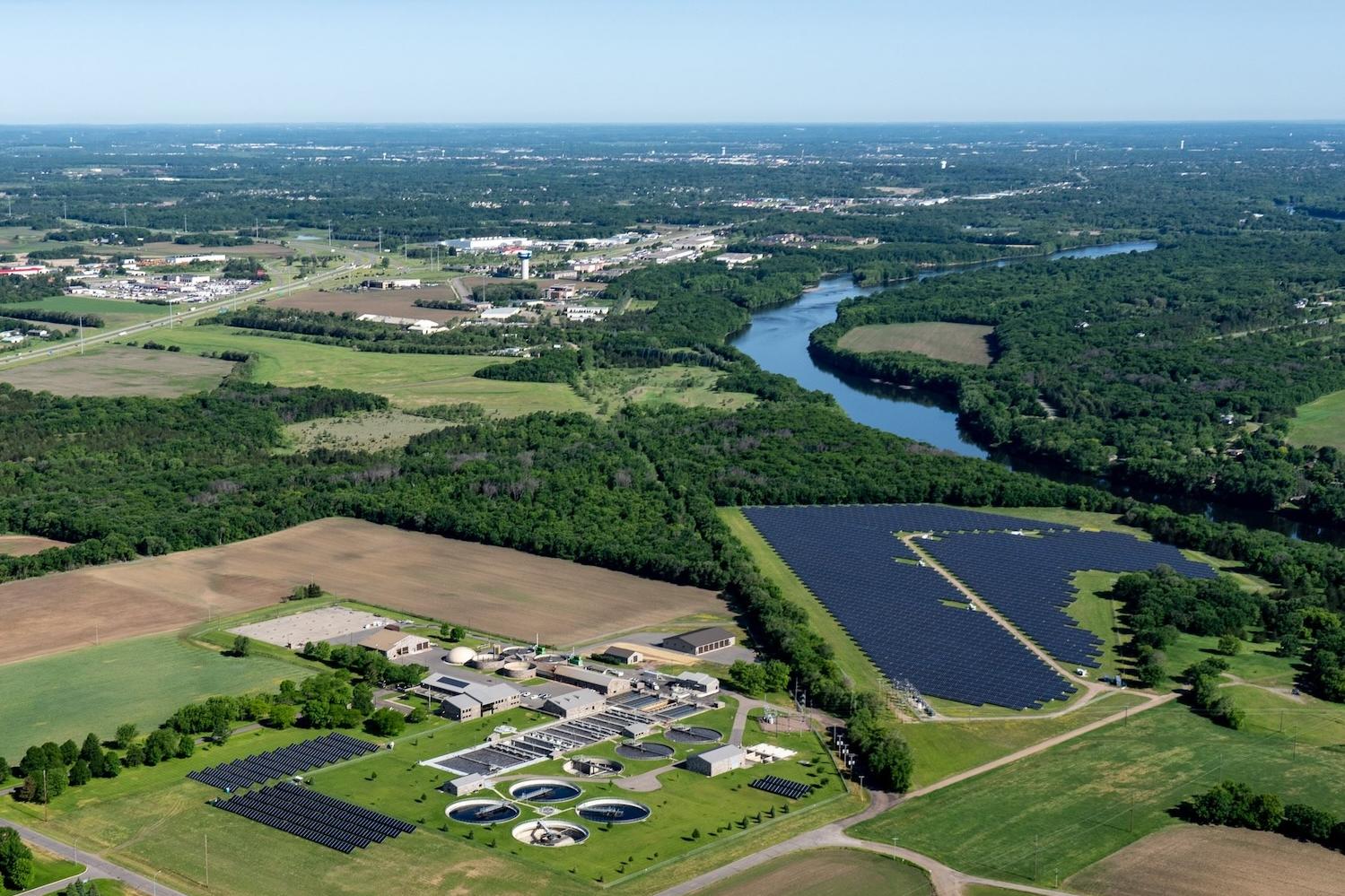
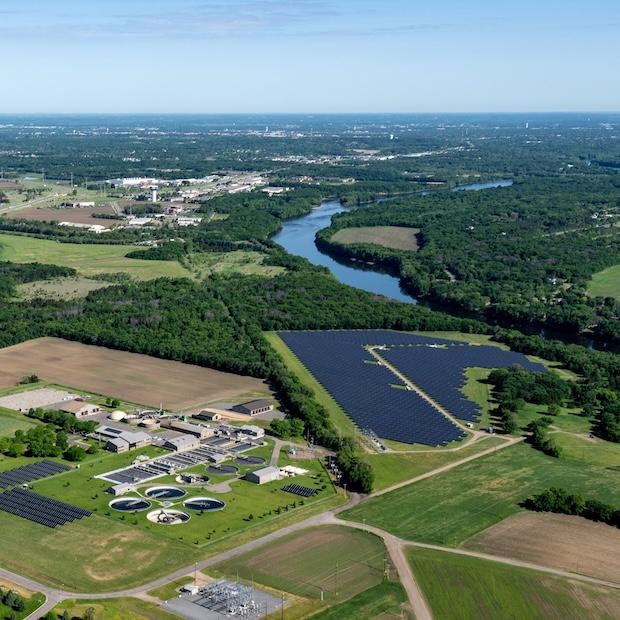
St. Cloud, Minnesota's wastewater treatment plant will soon be home to a new electrolyzer for green hydrogen production. (Image: Courtesy of the city of St. Cloud)
Green hydrogen could be a powerful driver of the global energy transition. Rather than extracting hydrogen from natural gas or gasified coal, the green hydrogen industry deploys electrolysis systems that “split” water into hydrogen and oxygen with an electrical current.
Assuming the electricity running the electrolysis equipment comes from wind, solar or other renewable resources, the result is a more sustainable source of hydrogen for zero-emission fuel cell vehicles. Green hydrogen can also shrink the carbon footprint of other hydrogen-dependent sectors, including the global chemicals industry, food systems, refining and steelmaking, among others.
The downside? Electrolysis systems need water — and plenty of it. It is commonly cited that it takes 9 liters of water to produce 1 kilogram of hydrogen through electrolysis, though the Rocky Mountain Institute suggests a total of 20 to 30 liters per kilogram is more accurate to account for water purification and cooling.
That sounds like a lot, but relative to conventional hydrogen systems, it isn't. Hydrogen systems based on fossil fuels require 20 to 40 liters of water per kilogram of hydrogen, according to the Rocky Mountain Institute.
Still, with global freshwater supplies at substantial risk already, green hydrogen stakeholders have an opportunity to make a real difference. Instead of using clean, pure freshwater for electrolysis, they can use impure sources.
That sounds easy enough, but the devil is in the details. Impurities in water can quickly foul the delicate membranes in conventional electrolysis systems. New, more affordable pre-treatment systems are beginning to solve that problem, and innovators are developing hardier systems that can operate directly on impure water. Here are five emerging water-for-hydrogen developments to watch in the U.S. and around the world.
1. Minnesota: Putting municipal wastewater to work
Water resource managers are adopting the phrase “water resource recovery facility” (or WRRF) as a more helpful and accurate description of what goes on at a wastewater treatment plant. The choice is timely, considering that WRRFs could form a practically limitless source of impure water for electrolysis.
One showcase project is taking place in the city of St. Cloud, Minnesota, which is moving forward with plans to add a new electrolyzer system to its WRRF. The project includes substantial inter-agency partnerships and $3.6 million grant from the U.S. Department of Energy.
Once complete, the project will offset the fossil fuels that typically power the wastewater treatment process. The electrolyzers will run on renewable energy and produce oxygen as a byproduct, which will be used for the plant's aeration systems. The partners are also looking to support a fleet of hydrogen fuel cell buses with green hydrogen from the new electrolysis system.
2. Sweden: Seawater with an extra green twist
The oceans are another virtually infinite source of impure water for electrolysis. Researchers and innovators are drawing economical pathways for producing hydrogen from seawater, and offshore wind developers are already incorporating offshore green hydrogen production into their plans.
One particularly interesting offshore project was proposed as part of a gigantic new wind farm off the southern coast of Sweden in the Baltic Sea. Called Neptunus, the wind farm project is a partnership between the renewable energy firm OX2 and the investments branch of Ingka Group, known as the leading franchisee of the iconic Swedish home furnishing company Ikea.
In addition to feeding Europe’s growing demand for wind energy and green hydrogen, the partners proposed injecting oxygen from the electrolysis system into the Baltic Sea to help restore parts that are designated “dead zones” due to depleted oxygen levels.
3. Wales: Water from factories and rooftops, too
A project in Wales illustrates how green hydrogen production can work in concert with local industries and even the local weather. The utility Wales & West partnered with the global firm Hydrostar to explore the use of industrial wastewater for electrolysis.
The partners are investigating three membrane-free electrolyzer prototypes, which can be tailored to operate on specific kinds of industrial waste. These systems could be located at manufacturing sites that produce large amounts of wastewater, including textiles, electronic goods and processed foods.
In a nod to Wales’ rainy weather, the project also covers rainwater harvested from rooftops and storm runoff, which contains a variety of impurities.
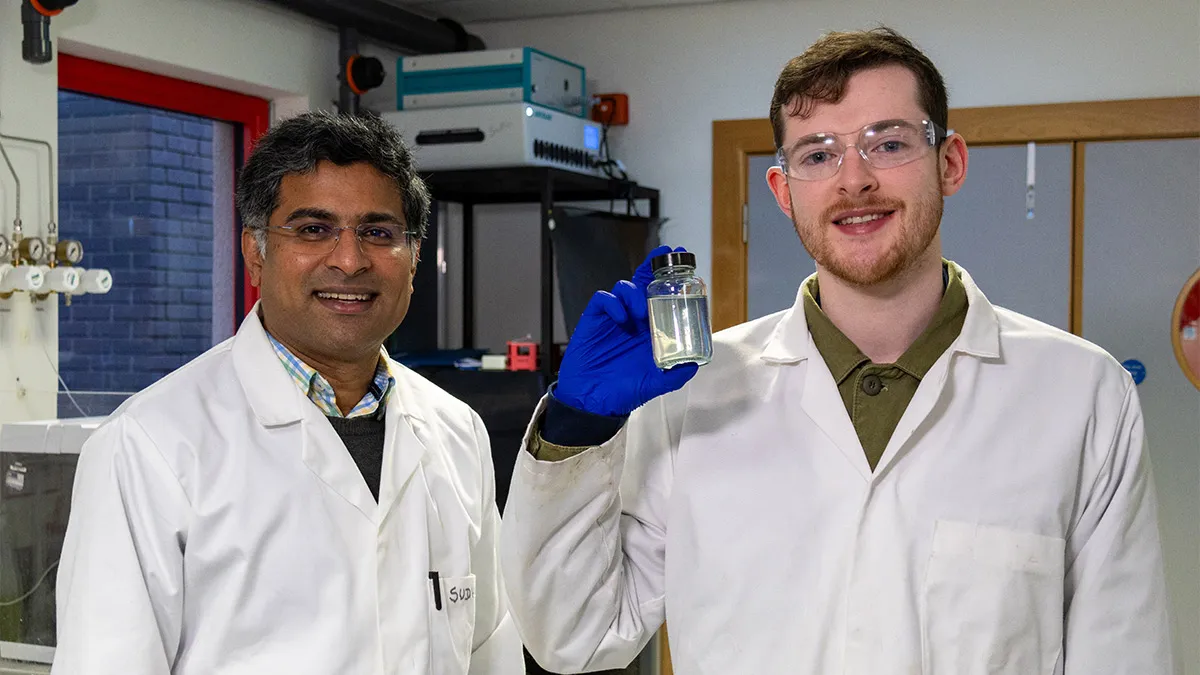
4. Scotland: Water from spirits
In another project that makes use of local resources, a research team at Heriot-Watt University in Scotland uncovered a way to reuse the wastewater from distilleries for green hydrogen production. Every liter of malt whiskey generates about 10 liters of residue, adding up to an estimated 1 billion gallons of wastewater from the global whiskey sector each year, according to the researchers.
Their solution is an affordable pre-treatment step that deploys nanoscale particles of nickel selenide, a semi-conducting material. Their initial findings suggest that the pre-treatment does not interfere with the efficiency of the electrolysis system and may even result in a slight increase in efficiency.
5. Oregon and California: Beyond electrolyzers
Electrolysis is not the only way to produce hydrogen from water. Another method consists of an “artificial leaf” approach in which hydrogen is released through a chemical reaction started by sunlight, with the help of a catalyst substance that speeds up the process.
At Oregon State University, scientists partnered with researchers from the tech company HP to develop a catalyst that can rid water of pollution from herbicides while producing hydrogen, too.
Specifically, the catalyst is designed to tackle herbicides containing glyphosate, sold under the trade name Roundup. The leaching of glyphosate into soil and groundwater is a significant concern because crops only absorb a small amount of it. "We are showing that through photocatalysis, it is possible to produce a renewable fuel while removing organic pollutants, or converting them into useful products,” lead researcher Kyriakos Stylianou said of the findings.
Another green hydrogen project underway in California aims to produce hydrogen from biomass instead of water. Set to open next year, the new biomass facility will use brush from forests, helping to reduce the risk of wildfires, as well as agricultural waste that would typically be burned or buried. Instead, the waste will be rendered into green hydrogen and biochar, which is gaining traction as an important carbon sequestration agent. Hydrogen from the new facility will be marketed as a replacement for diesel fuel at the Port of Los Angeles.
The bottom line: Creativity keeps green hydrogen on the cutting edge
Altogether, these initial projects illustrate how the green hydrogen industry could help resolve environmental challenges beyond simply replacing fossil resources with renewable ones. That should be all the more reason to adopt them into mainstream practice heading into 2024 and beyond.
Greenhushing at Work: Why 70% of Companies Are Hiding Their Climate Goals


(Image: Iryna/Adobe Stock)
This story was originally published by Grist. Sign up for Grist's weekly newsletter here.
For decades, environmental advocates have been pushing back against “greenwashing,” when polluting companies misleadingly present themselves as environmentally friendly. Governments are finally starting to tackle the problem with stricter regulations: The European Union agreed to ban deceptive environmental ads in September, and the U.S. Fair Trade Commission is in the process of updating its guidelines around green advertising.
But as new rules go into effect, they’re contributing to a different problem: Many companies, even honest ones, are afraid to talk about their work on climate change at all.
The practice of “greenhushing” is now widespread, according to a new report released last week by South Pole, a Switzerland-based climate consultancy and carbon offset developer. Some 70 percent of sustainability-minded companies around the world are deliberately hiding their climate goals to comply with new regulations and avoid public scrutiny. That’s in contrast to just a few years ago, when headlines were full of splashy corporate promises on climate change and even oil companies were pledging to zero out their emissions. The report suggests that this newfound silence could impede genuine progress on climate change and decrease pressure on the big emitters that are already lagging behind.
South Pole found that climate-conscious companies in fashion, consumer goods, tech, oil, and even environmental services are “greenhushing.” Nearly half of sustainability representatives reported that communicating about their climate targets has become harder in just the past year. But companies aren’t giving up on going net-zero — just the opposite. Of the 1,400 companies surveyed, three-quarters said they were pouring more money than before into efforts to cut carbon emissions. They just didn’t want to talk much about it.
“We really just cannot afford to not learn from each other,” said Nadia Kähkönen, a deputy director at South Pole and the report’s lead author. Companies should be sharing the lessons they’ve learned from trying to cut their emissions, engaging one another in hard conversations about “what is working and what is not, and how we can improve it,” she said.
Greenhushing was the most common, unexpectedly, among the greenest companies. Some 88 percent of those in environmental services, a category that includes renewables and recycling, said they were decreasing their messaging about their climate targets, even though 93 percent said they were on track to meet their goals. Consumer goods companies, like those that sell food, beverages, and household goods, were the next likely to be greenhushing (86 percent), more than the oil and gas industry (72 percent).
The survey, conducted anonymously, is the first to offer insight from companies as to why they’re keeping quiet. Environmental service companies had one of the same top reasons as oil companies: heightened scrutiny from investors, customers, and the media. Among all the companies that admitted to greenhushing, well over half listed changing regulations as a reason why they’re not talking about their climate pledges. Some companies also cited a lack of sufficient data or clear industry guidance around how to communicate their green claims.
Their hesitation has real consequences, researchers from South Pole said. For one, it cuts down on the sense of competition and pressure that can drive companies to be more ambitious with their environmental targets. “If you’re hiding what you’re doing, or not talking about it in a prominent way, it can hold back others,” said George Favaloro, South Pole’s head of climate solutions for North America. The trend also could also cut down on sharing tips and tricks for decarbonizing that could help others trim their carbon emissions.
The report found that greenhushing isn’t unfolding equally across the 12 countries surveyed. American companies aren’t as quiet — likely because the United States has less regulation around environmental claims. U.S. companies were the second least likely to be greenhushing, behind Japan. European companies were on the opposite end of the scale. France, which has laws that explicitly limit greenwashing, led the pack with 82 percent of companies staying mum.
“They’re really up against it in Europe now, and in the U.S., it’s still a bit off in the future,” Favaloro said. “It’s coming, but it’s not quite here yet.” One of the first anti-greenwashing laws in the U.S. went into effect in California earlier this month, mandating that large companies disclose their emissions to back up climate-friendly claims. Lawsuits are also a growing threat: Last year, Nike and Delta Air Lines were sued for making questionable claims about their environmental impacts.
It might be surprising that U.S. companies are unafraid of communicating their climate goals considering the conservative backlash against ESG, short for “environmental, social and governance,” a set of standards investors use to assess companies. But the ESG drama has more serious consequences for asset managers like Vanguard and BlackRock, which removed references to sustainability goals on their websites last year, than for corporations.
The 1,400 companies surveyed in the South Pole report are some of the furthest along when it comes to corporate climate action. Overall, however, most companies haven’t even started yet. Only 8 percent of a broad group of 77,000 corporations, which includes global Fortune 500 companies, have set a net-zero target, the report found. “The more that even the leaders don’t talk about what they’re doing, it’s going to provide less motivation to get that group in the game,” Favaloro said.
This article originally appeared in Grist. Grist is a nonprofit, independent media organization dedicated to telling stories of climate solutions and a just future. Learn more at Grist.org
Is 2024 the Year of the Train?


This story on the new train projects to watch is part of The Solutions Effect, a monthly newsletter covering the best of solutions journalism in the sustainability and social impact space. If you aren't already getting this newsletter, you can sign up here.
When you look back at 2018, do you remember it as the year of the electric scooter? I do. Hordes of them appeared on city sidewalks across the country overnight, stirring up a frenzy. That year 38.5 million people rode shared e-scooters, and in 2019 ridership more than doubled to 88.5 million. Public interest in their mysterious appearance led to my brief stint specializing in scooter coverage.
I had a gut feeling that e-scooters were more than a short-term trend. They’re a common sight in many cities today, but they’re still struggling to find their footing in some places due to a slew of safety and regulatory issues.
Regardless of what the future holds for e-scooters, I have that same feeling about recent developments in the rail industry. If 2024 becomes the year of the train, it could benefit the environment and local economies. With that in mind, I’ll have my eye on these three trending train topics via solutions journalism coverage this year.
High-speed passenger trains are connecting major U.S. cities
In 2018, Brightline became the first privately-owned passenger rail line to launch in the U.S. in 100 years. At the end of 2023, it opened one of only two high-speed lines in the country — the other is a popular Amtrak line between Boston and Washington D.C., which tops out at 160 miles per hour after recent upgrades. Soon after, Brightline announced another high-speed project connecting Las Vegas and Southern California that’s set to break ground this year. That project will be all-electric, and the company estimates it will be twice as fast as traveling by car, with top speeds nearing 200 miles per hour.
The high-speed train Brightline already operates takes passengers from Miami to Orlando in just 3.5 hours. Among all of its train routes, the company estimates that it prevents carbon emissions equivalent to removing 3 million cars from the road each year. That’s due to the efficiency of shared transportation, as well as the company’s use of solar energy and biodiesel, a renewable fuel typically made from fats like vegetable oils that produces less emissions. Its high-speed Flordia route uses diesel-electric trains.

Amtrak may also expand its high-speed offerings soon. The federally chartered train operator is exploring a partnership with Texas Central to build a line between Dallas and Houston with an estimated travel time of just 90 minutes. The project won a grant from the U.S. Department of Transportation’s Federal Railroad Administration in December to further develop the plan and budget.
The growth of high-speed rail isn’t all positive, though. The projects are costly and can be slow-moving. The Brightline track from Las Vegas to California, for example, is estimated to cost $12 billion, and the Texas project has been in the works since 2014. The safety of those living near Brightline tracks has also come into question. Due to their high speeds, the company’s trains have the highest pedestrian death rate of any U.S. railroad, the Associated Press reports. Brightline is developing patrol drones, erecting barriers around tracks, and working with suicide prevention groups in hopes of keeping people safe and away from the tracks.
Will Mexico’s Tren Maya project truly benefit the Yucatan’s inland communities?
The first trains to operate on the new Tren Maya rail line shuttled passengers from Cancún to Campeche, Mexico, in late December 2023. The goal is to provide transportation to 34 major locations across five states in the Yucatán Peninsula, including two airports and plenty of popular attractions. But the $28 billion project is still nowhere near finished and the opening rides were riddled with delays, the Associated Press reported last month. The Mexican government aims to have all 947 miles of the rail line operational by the end of February.
Providing a route to inland locations is particularly important because a lack of highways and roads makes many of these areas less accessible than popular coastal towns. Along with improving connectivity, the train project is designed to boost and spread tourism across the region, and in turn, provide economic opportunity for more communities, according to a project statement.
But environmental activists, archaeologists and Indigenous people have criticized the project. They say that in the rush of development, not enough care was taken to prevent damaging the local ecosystem, freshwater sources and archaeological sites. In general, locals’ opinions on the project seem split. Over 80 percent of people polled in the region are optimistic about the economic benefits of Tren Maya, while others highlight issues like not being compensated for land they lost from the project, the BBC reports.
Move over, diesel. Electric freight trains are coming through
In the fall of 2023, we saw the first ever 100 percent battery-powered, heavy-haul locomotive that’s ready to transit goods on main rail lines. The rail tech company Wabtec Corp. spent decades developing it, and recent advances in energy storage technology finally made it a feasible option, Alan Hamilton, the company’s vice president of engineering, told Canary Media.
This doesn’t mean the whole train will be emissions-free, though. Multiple locomotives are typically used to pull one train. For now, Wabtec’s battery-powered locomotive will only replace one of its diesel-powered counterparts in a group. The battery-powered locomotive will work alongside the diesel-powered ones and recharge itself with regenerative braking — a method that uses an electric motor to capture energy from the braking system to recharge the batteries, according to Wabtec.
Still, the swap is expected to produce a double-digit drop in emissions and fuel use per train, according to the company’s estimates. The machine will start hauling iron ore in Western Australia this year.
Wabtec is one of many companies working to reduce emissions from freight trains. The startup Intramotev, for example, turns individual rail cars into all-electric, self-driving versions that can go up to 100 miles on a single charge, Fast Company reports. Mining companies also began using its tech toward the end of 2023.
Images courtesy of Brightline
Book Bans and ESG Backlash: Top Issues Brands Must Address in 2024


(Image credit: My Ocean studio/Adobe Stock)
Last year we saw global brands speak out on voting rights, LGBTQ+ equality, expanding access to renewable energy and more. And at the World Economic Forum's annual meeting in Davos, Switzerland, this month, issues top of mind for business leaders included the rise of artificial intelligence (AI) and the need to uphold democracy as half the world's population prepares to vote in national elections in 2024. Along with another critical year in the fight against climate change, these issues are sure to be at the forefront for brands as we head into the new year.
"Anti-ESG" backlash in the U.S. still has leaders worried
Environmental, social and governance (ESG) principles are used to measure and mitigate an organization's impact on society and the environment. Companies use ESG principles to understand the impacts they have today, as well as their future risks, and make plans to reduce them. Some investors then analyze corporate ESG strategies as they decide where to put their money, with the philosophy that the companies planning for the future may be wiser long-term investments than those that aren't.
By any other name, this type of auditing and risk assessment is standard business practice and certainly nothing new, but pushback from a vocal minority of politicians and pundits has it seeming downright scandalous in the U.S. Their arguments against ESG are scattered: Some take aim at investors for using ESG screens in decision-making, saying it harms financial returns, while others dismiss brand ESG strategies as lip service and "woke capitalism" that wastes shareholder money. The uncertainty that comes with the moving target has many business leaders concerned, with some saying they now talk less about ESG or use other terms like "sustainability," although they haven't actually changed their ESG strategies.
In the early weeks of the year, the newswires are brimming with thought leaders sharing their perspectives about how business leaders should cope with this complex environment. Impact communicators including Carol Cone, Susan McPherson, Andrew Winston, and TriplePundit contributors Tina Casey and Amy Brown are among those to weigh in over recent weeks.
Specificity over jargon came out as a key theme. Trading vague claims about "ESG leadership" for clear language that explains specific programming and its value makes it less likely a brand will draw ire from ESG critics or be accused of greenwashing by regulators. As Daryl Brewster, who leads the nonprofit Chief Executives for Corporate Purpose (CECP), told the Wall Street Journal earlier this month: “You can be anti-ESG. It’s hard to be anti-responsibility.” While critics may take issue with an acronym, it's much harder to make a compelling case against saving water and energy, reducing pollution, or protecting human rights.
Even some conservative lawmakers now see the ESG debate as a political football they'd rather boot to the sidelines. In a letter to the U.S. House Financial Services Committee, free-market groups with center-right political leanings advised legislators to avoid passing "more bans or mandates targeting the investment decisions of individuals, pension funds, or businesses," Axios reported last week.
A changing regulatory and reporting environment comes with growing pains
Outside the U.S., jurisdictions are moving to make it mandatory for large companies to publicly report how they impact people and the environment. Canada and Australia are among the countries that will mandate ESG reporting starting this year.
Meanwhile the European Union's corporate sustainability due diligence directive (CSDDD) came into force in 2023, requiring large companies to disclose their risks and impacts related to the environment and human rights. By 2026, companies selling goods and services in the EU will also be banned from using terms like “climate neutral” that rely on carbon offsets, which lawmakers say mislead consumers.
In the U.S., California's mandatory climate reporting law will come into force in 2026, compelling around 5,500 companies doing business in the state to disclose their greenhouse gas emissions. Federal climate reporting guidance from the U.S. Securities and Exchange Commission (SEC) is still pending as conservative Congressional lawmakers launched hearings and probes into the prospective regulation. New research finds many of these lawmakers received a combined $155 million in donations from the oil and gas industry as they fought the SEC rule. After being pushed back several times, the release of the SEC guidance is now expected this spring.
All of these various requirements popping up around the world present real challenges for global companies. Adding to the confusion is that many companies use different standards to report on their impacts today — including those from the Global Reporting Initiative (GRI), the Sustainability Accounting Standards Board (SASB) and the Task Force on Climate-Related Financial Disclosures (TCFD). A new unified reporting directive under the International Sustainability Standards Board could aid business leaders who are "choking on the alphabet soup" of various reporting requirements, but in the near-term, adapting to the unified standard will be a task in itself heading into 2024, TriplePundit's Amy Brown reported.
Book bans threaten free discourse and education in the U.S.
In last week's edition of our Brands Taking Stands newsletter, we took a closer look at how lawsuits against U.S. financial funds that support entrepreneurs of color put racial equity efforts in jeopardy. Another issue that should be on business leaders' radar is the increasingly common and decidedly dystopian practice of book banning at U.S. public schools.
The nonprofit Pen America tracked more than 3,300 instances of book banning over the 2022-2023 school year, an increase of 33 percent over the year prior. "Authors whose books are targeted are most frequently female, people of color, and/or LGBTQ+ individuals," it found. Toni Morrison's "Beloved" and Harper Lee's "To Kill a Mockingbird" are among the titles banned at some U.S. schools, Deborah Caldwell-Stone, director of the American Library Association's Office of Intellectual Freedom, told CBS News.
An estimated 18 U.S. states have also moved to restrict how race and gender are discussed in the classroom — which advocates say erases the country's violent and racist history of chattel slavery while ignoring the experiences of women and LGBTQ+ people.
To be clear, these moves are hugely unpopular with voters: 85 percent of respondents to a 2023 survey agreed that public school students "should learn about the history of racism and slavery in the United States and how it continues to affect us today." Even some conservative lawmakers seem to agree the book bans have gone too far. In Florida, among the states with the most book bans in the country, lawmakers are considering legislation to make it more difficult to challenge books en masse by instituting a $100 per book fee for challenges brought by people whose children do not attend school in a given district, independent journalist Judd Legum reported this week.
Given how the U.S. public feels about book banning, it's surprising more brands haven't spoken out about the issue, and this is clearly an area for attention in 2024.
U.S. abortion restrictions put employees and incoming talent at risk
In the 2022 Dobbs v. Jackson Women’s Health Organization decision, the U.S. Supreme Court overturned the federal protections for abortion that existed since the landmark Roe v. Wade case in 1973. In the months since, 14 U.S. states have passed laws that almost completely ban abortions, according to tracking from The Guardian. Others restricted access after six weeks of pregnancy, before many know they're pregnant.
These bans carry dangerous implications for those already living in these states and also make others less inclined to move there, which could have a heavy impact on businesses and their ability to attract top talent, TriplePundit's Tina Casey observed earlier this month. For example, 66 percent of surveyed workers who do not live in Texas said its strict abortion ban would "discourage them from taking a job there," and 63 percent said they wouldn't even consider a job in a state that banned reproductive care, according to an amicus brief filed in a Texas case that seeks to clarify how the state's law is applied in medical emergencies.
Shortly after Dobbs, large companies including Salesforce, JPMorgan Chase, Levi Strauss and Condé Nast publicly pledged to cover travel expenses for employees who need to leave their state for an abortion due to restrictions. Although helpful to some seeking care, pledges like these fail to account for emergency services — and in places like Texas, medical workers are not required to provide an abortion under existing laws, even in cases where the patient's life is at risk.
Companies including the dating app Bumble signed on to the amicus brief in support of clarity on the Texas law for emergency medical providers and their patients. In her analysis, Casey sees moves like these as a new way for companies to find their voice on abortion care, without making moral judgment and instead focusing on how ambiguities in these laws can cause harm.
What's on your mind in 2024?
What topics, trends and challenges are on your mind heading into 2024? Your feedback is a constant source of inspiration for our coverage, and we always love to hear from you. Please share any thoughts here, and here's to a great year ahead!